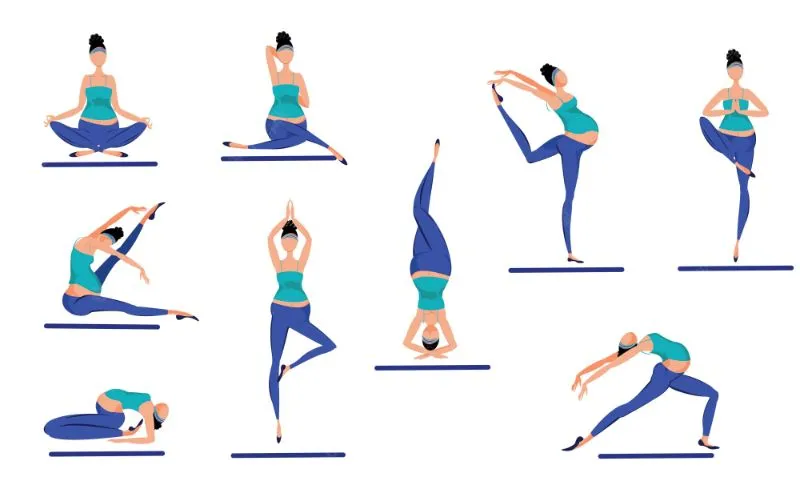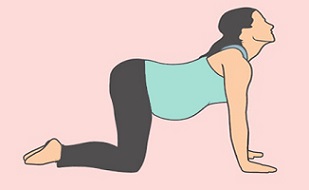10 Safe Pregnancy Exercises by Trimester
Nov 24, 2022

It is a common belief that one should avoid heavy physical work during pregnancy. However, that does not mean that during pregnancy, fitness has to take a backseat. In fact, doctors recommend including certain prenatal exercise regimes in the daily routine, as they can significantly help reduce complications at the time of birth. Not only that, but certain postnatal exercise regimes can also help after delivery in managing mood swings, postpartum depression, etc. Getting in some daily exercise during pregnancy is not only good for the mother but also for the child. It can also help avoid a variety of health-related issues such as excessive gestational weight gain, gestational diabetes, gestational hypertension, preeclampsia, preterm birth, lower birth weight, caesarean birth, and operative vaginal delivery.
Antenatal exercises can help in improving the physical and psychological condition of the mother during her pregnancy. They also play an important role in preventing pregnancy-related problems, while postnatal exercises can help the mother regain strength after giving birth. However, it is important to ensure that the exercises that are included in the daily routine are suitable for a person, based on the trimester they are in and on their overall health. One should consult their doctor about things like the benefits of walking during pregnancy, doing squats during pregnancy, and till when they can safely continue with squats, which exercises they should avoid, etc. before embarking on any new exercises.
The Best Pregnancy Exercises by Trimester
The best exercise for pregnant women focuses on building core strength, improving balance, and pelvic floor coordination. One can start with simple pregnancy exercises at home after consulting with their doctor. Some common exercises that can be considered by trimester include:
Exercise for the First Trimester
As long as one does not have a high-risk pregnancy, one may continue with their regular exercise regime for the first three months of pregnancy, or the first trimester. Other exercises that can be added to the routine include:
Diaphragmatic Breath with Pelvic Floor Activation
This exercise is a basic Kegel exercise which is highly recommended for pregnant women.
- Stand up straight with feet wide and knees soft.
- Place hands on the belly and close your eyes.
- Take deep breaths while allowing the belly to expand and contract fully with each inhale and exhale.
- Contract the pelvic floor with each exhale while pulling the abdominals in and up.
The Sit-to-Stand Move
The sit-to-stand movement helps determine one’s functional level.
- Start with standing tall, with the knees, feet, and thighs together.
- Turn palms forward and hinge back at the hips into a sit position, while ensuring the knees are over the ankles and the spine is long and straight.
- Stretch the glutes while sweeping your arms overhead.
- Press the feet down and drive up through the floor to come back to the stand position as the arms return by the side.
- Contract the pelvic floor while returning to the stand position.
Standing Abs
 This exercise helps one work on their stability while strengthening the core muscles. If
This exercise helps one work on their stability while strengthening the core muscles. If needed, it is completely alright to grab onto the back of a chair for support as well during this exercise.
needed, it is completely alright to grab onto the back of a chair for support as well during this exercise.
- Tap one toe forward while angling the hip bones upwards and squeezing the glutes, leaning slightly back.
- Ensure hugging the rib cage so there’s no sinking into the lower back.
- Reach overhead with the arms and palms facing forward.
- Lift the front leg up while pressing the arms downwards; this involves the core muscles of the abdomen.
Pelvis Articulation
- Place one foot back, as though mid-step, and lower the back heel.
- With the front knee slightly bent, open and close the hips, rotating the pelvis, while ensuring the feet are pointing straight forward.
- For an extra workout of the upper body using light weights and pulling one elbow back at a time while twisting the hips can be considered if the doctor okays it.

Butt Press
- Start on all fours and keep the spine neutral. Hands should be in line with the shoulders and the hips should be over the knees.
- Keep the abdomen lifted upwards to ensure the back is neutral.
- Bend one knee towards the ceiling, pressing through a flexed foot, pumping through the glutes.
- Return to the starting position.
Pregnancy Exercises for the Second Trimester
As the second trimester begins, it is important to take stock of one’s exercise regime and adjust it. While one should be able to continue most of the physical activities from their first trimester, it is best to remove activities that may be too strenuous or that involve a risk of falling or jerking movements.
The Step Back
- Put one foot behind, as though in mid-step and press the back heel downwards.
- Lean the body forward to make a diagonal line from the heel to the crown of the head, with the arms reaching back.
- Keeping the back leg straight, lift the heel while squeezing the glutes and pushing through the ball of the foot and reaching overhead with the arms.
- Return to the starting position.
Stagger Row
- Hold light weights in your hands; take the hips back into a sit position, with the knees deeply bent and weights at a low diagonal.
- Keep the knees in line. Bring a foot backwards, pressing through the ball of the foot.
- Drive upwards through the feet to fully extend the hips while squeezing in the hands by the ribs to engage the postural muscles and glutes.
Rotating Stagger
- Start from the ‘Stagger Row’ position.
- Keep standing foot forward, pivot hips and torso towards front leg, while rotating on a 45-degree angle towards the side.
- Extend weights in the internal position.
- Return towards the centre, bringing back the arms in a rowing motion.
Pregnancy Exercises for the Third Trimester
It is recommended to include about 30 minutes of gentle exercises per day to strengthen the core muscles and pelvic floor during the third trimester. Consulting a doctor is a must to ensure no strenuous activities are included in pregnancy workouts.
The Fire Hydrant
- Lean forward with the upper body, hands interlaced, knees softly bent, and stagger one foot behind.
- Begin lifting and lowering the back leg out towards the side.
- Squeeze the outer glute and engage the pelvic floor while returning to the stagger position.
- If unsure of balance, it is okay to hold on to the back of a chair for support.
Kneeling Hip Flexor Stretch
- Start in a kneeling position and put one foot directly in front, taking the arms forward to reach shoulder height.
- Squeeze the back glute and shift your hips forward while reaching up towards the ceiling with the arm on the side of the kneeling leg.
- Always keep the kneeling glute squeezed.
- Return to starting position and repeat with the other leg.
Exercises to Avoid During Pregnancy
Exercises that involve jumping, skipping, or hopping should be avoided as they can cause a lot of stress on the body. During pregnancy, it is best to avoid exercises like:
- Deep knee bends
- Full sit-ups
- Double leg raises
- Straight-leg toe touches
- Bouncing while stretching
Whether it is after delivery or in early pregnancy, exercise can help mothers stay in shape. Not only that, but they can also help prevent complications during birth. However, it is extremely important to ensure that the exercise regime to be followed is tailored to one’s individual needs and health.
Related Blog Post
Blog Categories
- Child Health
- Mens Health
- Women's Health
- Mental Health
- Health Myths & Facts
- Fitness
- Nutrition/Recipes
- Remedies
- Weight Management
- Stress Management
- Health Supplements
- Addiction Management
- Disease Management
- Allergy
- Anemia
- Arthritis
- Asthma
- Autoimmune Diseases
- Blood Pressure
- Cancer
- Deficiencies
- Dengue/Malaria/Chikungunya
- Diabetes
- Eye Problems
- Heart Diseases
- Hepatitis
- HIV/AIDS/STD
- Hormonal Imbalance
- Infection/Flu/Viral
- Kidney
- Liver
- Menstrual Problems
- Pregnancy
- Skin & Hair Problems
- Stomach Ailments
- Thyroid
- Others
- Health Checkups
- Diagnostics/Pathology
- Lifestyle & Wellness
- Covid
- Medical Tests
- Cholesterol
- Health Tips
- Parent Care/Old Age
- Lungs
- Food Intolerance








